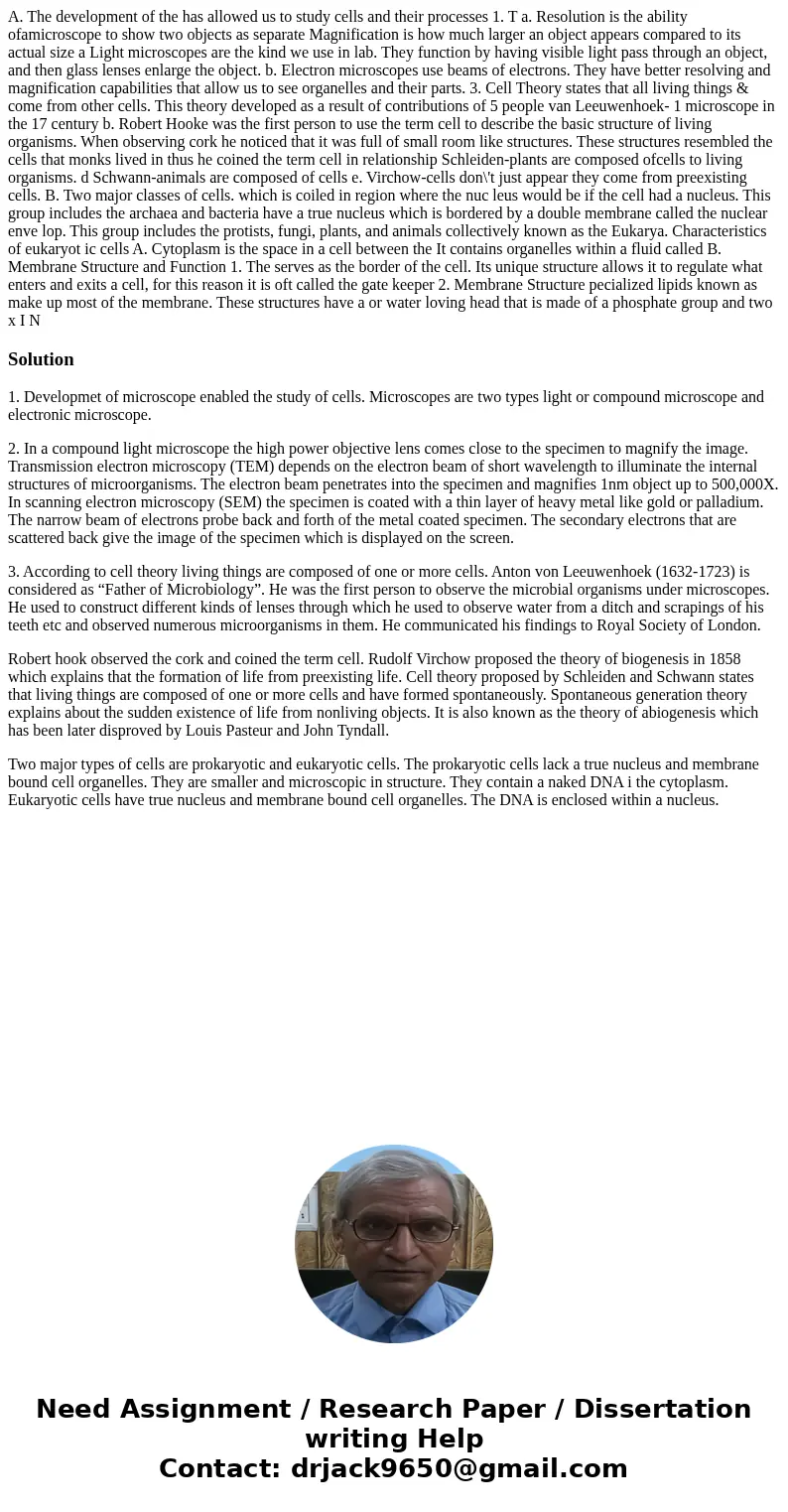A The development of the has allowed us to study cells and t
Solution
1. Developmet of microscope enabled the study of cells. Microscopes are two types light or compound microscope and electronic microscope.
2. In a compound light microscope the high power objective lens comes close to the specimen to magnify the image. Transmission electron microscopy (TEM) depends on the electron beam of short wavelength to illuminate the internal structures of microorganisms. The electron beam penetrates into the specimen and magnifies 1nm object up to 500,000X. In scanning electron microscopy (SEM) the specimen is coated with a thin layer of heavy metal like gold or palladium. The narrow beam of electrons probe back and forth of the metal coated specimen. The secondary electrons that are scattered back give the image of the specimen which is displayed on the screen.
3. According to cell theory living things are composed of one or more cells. Anton von Leeuwenhoek (1632-1723) is considered as “Father of Microbiology”. He was the first person to observe the microbial organisms under microscopes. He used to construct different kinds of lenses through which he used to observe water from a ditch and scrapings of his teeth etc and observed numerous microorganisms in them. He communicated his findings to Royal Society of London.
Robert hook observed the cork and coined the term cell. Rudolf Virchow proposed the theory of biogenesis in 1858 which explains that the formation of life from preexisting life. Cell theory proposed by Schleiden and Schwann states that living things are composed of one or more cells and have formed spontaneously. Spontaneous generation theory explains about the sudden existence of life from nonliving objects. It is also known as the theory of abiogenesis which has been later disproved by Louis Pasteur and John Tyndall.
Two major types of cells are prokaryotic and eukaryotic cells. The prokaryotic cells lack a true nucleus and membrane bound cell organelles. They are smaller and microscopic in structure. They contain a naked DNA i the cytoplasm. Eukaryotic cells have true nucleus and membrane bound cell organelles. The DNA is enclosed within a nucleus.

 Homework Sourse
Homework Sourse